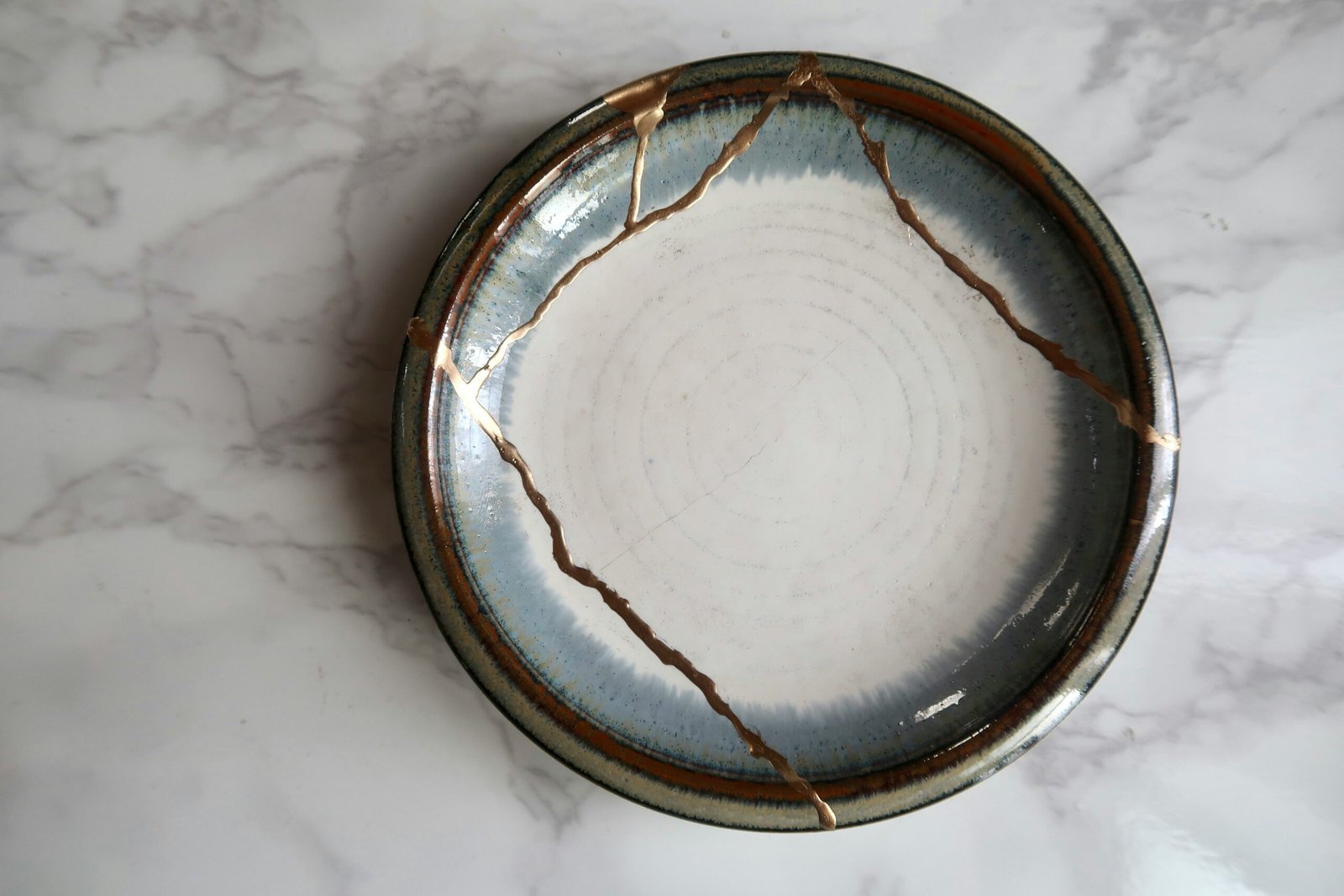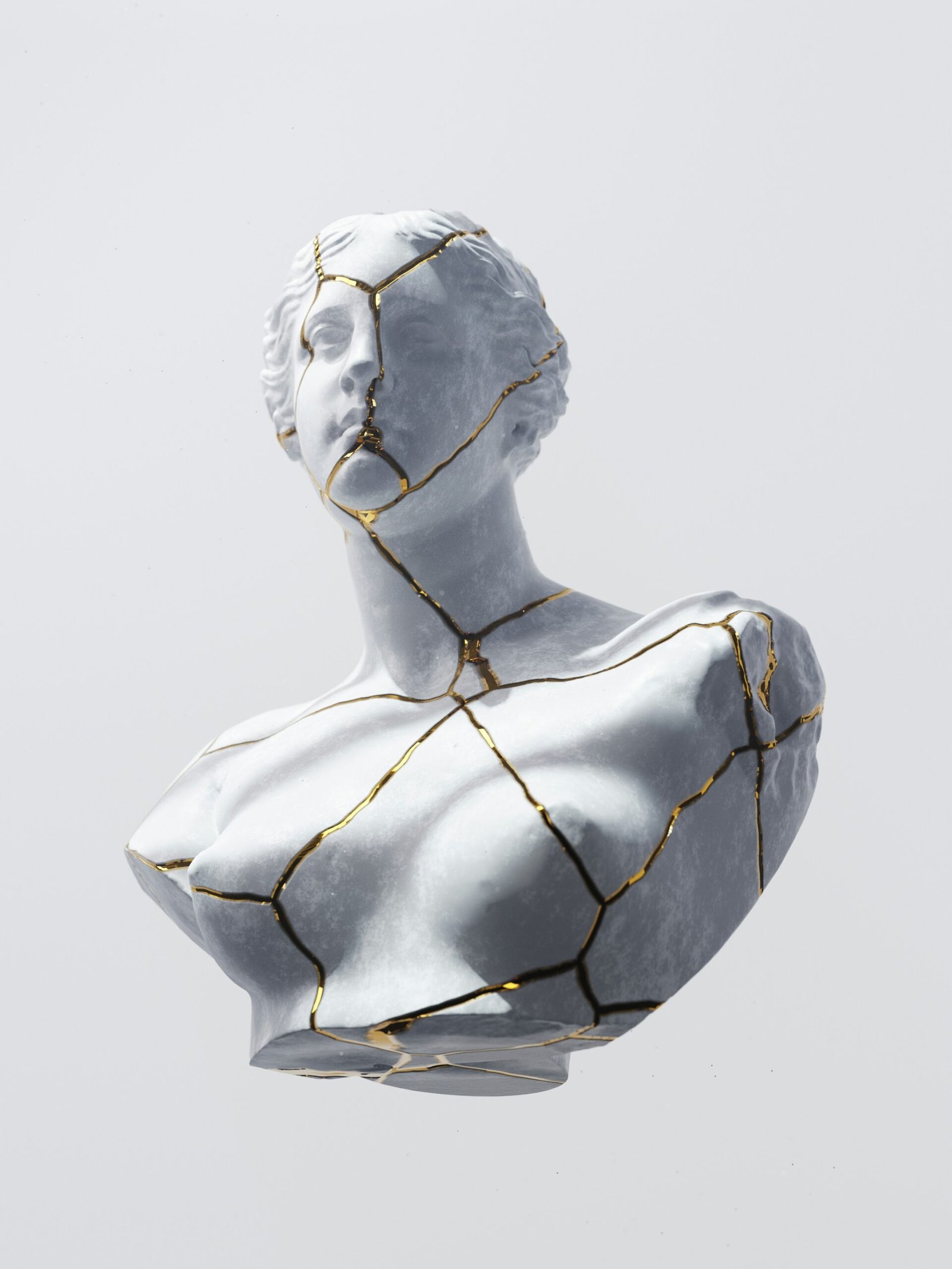Introduction
Kintsugi, meaning “golden joinery” in Japanese, is the ancient art of repairing broken pottery with lacquer mixed with powdered gold, silver, or platinum. Rather than hiding cracks, it celebrates them—transforming damage into beauty. This philosophy embraces flaws as part of an object’s story, adding depth and value through imperfection.
In the context of clay healing, Kintsugi (also known as Kintsukuroi) offers a powerful metaphor for resilience, repair, and personal transformation. The process encourages mindfulness and self-reflection, inviting participants to view breakage not as failure but as part of growth. Much like choosing what to make with clay, the act of restoration becomes an expression of care and renewal.
For those looking to experience this firsthand, we offer a Kintsugi workshop in London, where participants can learn the traditional technique using a Kintsugi kit and explore the beauty of imperfection through hands-on practice. Whether you’re mending a broken piece or reflecting on your own journey, the workshop offers a quiet, meaningful space to reconnect, repair, and create.

Benefits
Cultivates Patience and Calmness
The meticulous process of piecing fragments together and applying gold requires slow, intentional movements, which promote mindfulness and reduce anxiety.Encourages Self-Acceptance and Growth
Repairing broken objects mirrors the process of embracing one’s flaws and turning life’s challenges into opportunities for growth and transformation.Relieves Stress Through Focused Craftsmanship
Engaging in the detailed and tactile work of Kintsugi provides a constructive outlet for tension, channeling nervous energy into creating something meaningful.Enhances Problem-Solving Skills for Work and Life
The process of figuring out how to reconstruct a broken object fosters adaptability, creativity, and resilience—qualities that translate into professional and personal contexts.
Steps to Practice
Gather Tools and Materials
- A broken ceramic piece (or intentionally broken pottery).
- Kintsugi repair kit or lacquer, gold powder, and brushes.
- Protective gloves and a clean workspace.
Clean and Prepare the Fragments
Wash and dry the broken pieces to ensure they fit together seamlessly.Apply Adhesive and Reconstruct
Use lacquer or an adhesive to join the fragments, working slowly and precisely to align them properly.Add Gold Powder
While the adhesive is still tacky, sprinkle gold powder along the cracks, emphasizing the repaired areas.Polish and Reflect
Once the lacquer is fully dry, gently polish the surface. Take time to observe the transformation of the object and reflect on its symbolic meaning in your life.
What to Expect in a Session
Introduction and Reflection
Sessions begin with a discussion about the philosophy of Kintsugi and its metaphorical significance in life. Participants are encouraged to reflect on a personal challenge or moment of growth.Preparing the Broken Object
Participants select or bring a broken piece and take time to familiarize themselves with its fragments, symbolizing the process of understanding life’s imperfections.Repairing with Intention
Guided by facilitators, participants piece the fragments together, applying lacquer and gold powder. The process emphasizes mindfulness and the value of slow, intentional work.Group Reflection
After completing their pieces, participants share their experiences and insights, fostering a sense of connection and mutual understanding.Integration and Takeaway
Sessions conclude with journaling or quiet reflection on how the lessons of Kintsugi can be applied to personal challenges or professional growth.

How This Approach Heals
Calmness
The slow and deliberate nature of Kintsugi promotes mindfulness, helping participants focus on the present moment. The tactile and meditative process of repairing pottery soothes the mind and reduces anxiety.
Self-Knowledge
By working with broken pieces, participants explore their emotional landscapes and reflect on how they perceive flaws and challenges. The transformation of the object mirrors the journey toward self-acceptance and personal growth.
Stress Relief
The act of repairing pottery provides a therapeutic outlet for tension, allowing participants to process their emotions constructively. The satisfaction of creating something beautiful from brokenness helps alleviate mental and emotional stress.
Work Productivity
Kintsugi teaches patience, adaptability, and creative problem-solving, skills that are invaluable in professional settings. The practice also reinforces the idea of finding value in mistakes and setbacks, fostering resilience in the workplace.
Long-Term Benefits
Embracing Imperfections
Participants learn to see flaws as opportunities for growth and creativity, fostering greater self-acceptance and emotional resilience over time.Sustained Calm and Mindfulness
The meditative nature of Kintsugi helps participants develop habits of mindfulness, leading to a calmer and more centered approach to daily challenges.Improved Emotional Processing
The symbolic act of repairing broken pieces offers a framework for understanding and navigating life’s difficulties, helping participants process emotions more effectively.Enhanced Problem-Solving Skills
The practice of reconstructing pottery strengthens creativity and adaptability, skills that enhance decision-making and innovation in professional and personal contexts.A Lasting Connection to Growth
Each repaired piece serves as a tangible reminder of resilience and the beauty of transformation, inspiring participants to approach future challenges with a growth mindset.
